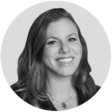The words “supply chain” were barely in the public lexicon 10 years ago. Now it’s a top-of-mind concern for industry and government agencies alike.
COVID-19 turned the world on its head, and along with it some of the everyday assumptions about what supply, demand and Adam Smith’s invisible hand could handle.
Now, the government and companies are rethinking some of the ways they do business to ensure products are delivered on time and shortages become a thing of the past.
The Biden administration issued an executive order early in the presidency to tackle supply chain issues.
“The key theme, and really everything that’s coming out of the executive order is about resiliency,” said Christine Barnhart, senior director at Infor for supply chain strategy, during a Federal Insights discussion sponsored by Infor. “The order is about how we make our supply chains less fragile and more resilient. It’s not so much about isolating us from the rest of the world, but really taking out some of the risks, and making sure that we’re able to be self-sustaining at least for a period of time.”
The United States is especially focusing on some important and fragile supply chains like electric vehicle batteries, semi-conductors, microchips and rare earth minerals.
The executive order created a task force on the issue and prompted a 100-day review.
“The United States needs resilient, diverse and secure supply chains to ensure our economic prosperity and national security,” the order states. “Pandemics and other biological threats, cyber-attacks, climate shocks and extreme weather events, terrorist attacks, geopolitical and economic competition, and other conditions can reduce critical manufacturing capacity and the availability and integrity of critical goods, products and services. Resilient American supply chains will revitalize and rebuild domestic manufacturing capacity, maintain America’s competitive edge in research and development, and create well-paying jobs.”
“What that means for private companies is working with the government and understanding their own processes better,” Barnhart said.
“The government needs to incentivize companies to make investments for better resiliency, better transparency and more communication,” she said. “We have these multi-enterprise business networks and they haven’t been well-adopted across supply chain, generally on a global nature. What we’ve seen as a result of just COVID, in general, but then in government policies, and even in government research, is a real push to build better commerce networks and collaboration networks. I think you’ll see a lot more investment in that area.”
Barnhart said companies are changing their risk framework after seeing how fragile supply chains were.
“We’ve seen a ton of companies looking at, maybe not completely onshoring, but nearshoring,” she said. “So bringing their supply chains a little closer to the point of consumption. We’ve seen a ton of activity in supplier management and supplier collaboration tools. I think the other big area is really around the demand side as in demand planning, demand sensing. The demand patterns of the past have been just completely kind of thrown out the window.”
The Executive Order and Supply Chain Management
The key theme, and really everything that's coming out of the executive order is about resiliency. The order is about how we make our supply chains less fragile and more resilient. It's not so much about isolating us from the rest of the world, but really taking out some of the risks, and making sure that we're able to be self-sustaining at least for a period of time.
Christine Barnhart
Senior Director, Supply Chain Strategy, Infor
Supply Chain and the Pandemic
The government needs to incentivize companies to make investments for better resiliency, better transparency and more communication. What we've seen as a result of just COVID, in general, but then in government policies, and even in government research, is a real push to build better commerce networks and collaboration networks. I think you'll see a lot more investment in that area.
Christine Barnhart
Senior Director, Supply Chain Strategy, Infor
Listen to the full show:
Copyright
© 2025 Federal News Network. All rights reserved. This website is not intended for users located within the European Economic Area.









